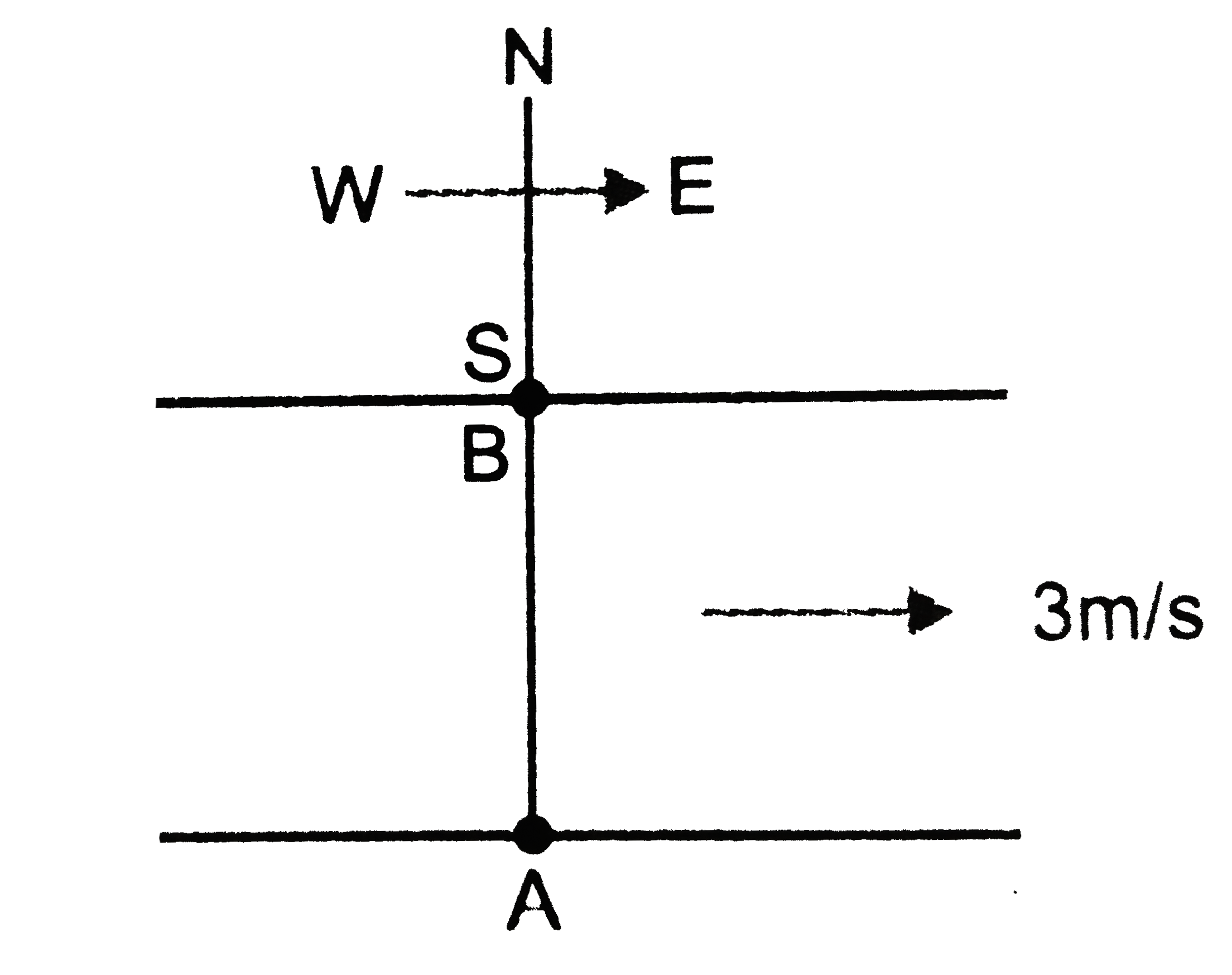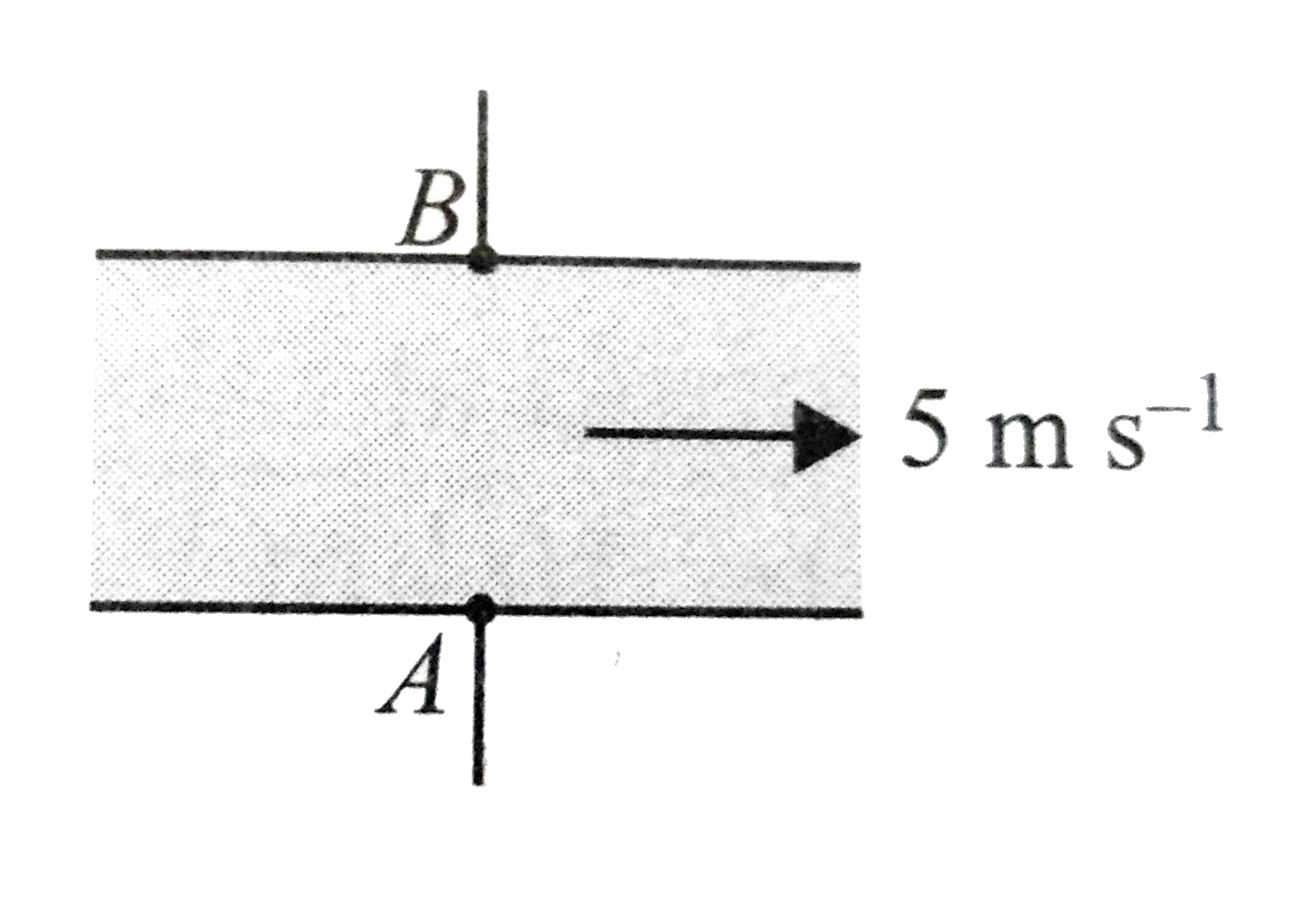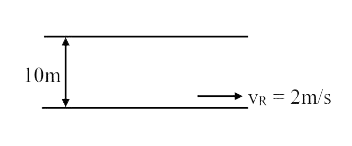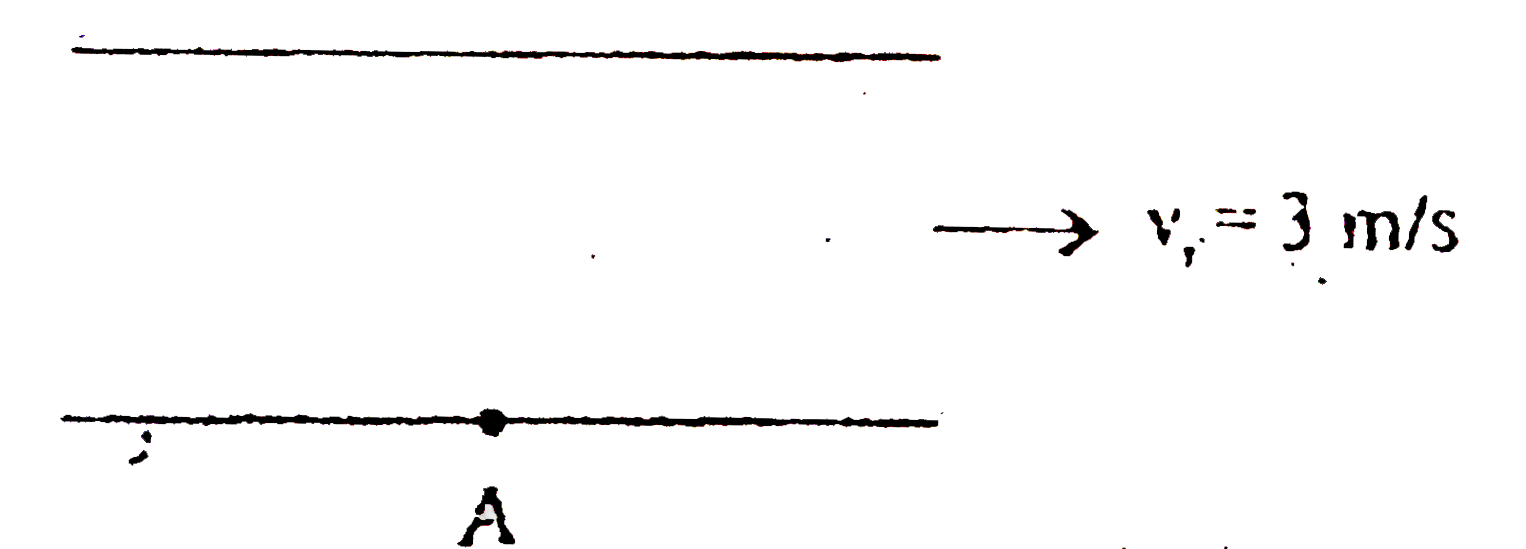A river is flowing due east with a speed 3m/s. A wimmer can swim in still water at a speed of 4m/s. If swimmer starts swimming due north, what will be his resultant velocity (magnitude and direction) ?

5m/s at 37∘ to N
5m/s at 53∘ to N
10m/s at 37∘ to N
None of these
The correct Answer is:A
Vnet=√(32+42)=5m/s at tan−1(34)
=5m/s at 37∘ to N.
Topper's Solved these Questions
- MOCK TEST 6BOOK - CAREER POINTCHAPTER - MOCK TEST 6EXERCISE - Part (B) (CHEMISTRY)
30 Videos
- MOCK TEST 6BOOK - CAREER POINTCHAPTER - MOCK TEST 6EXERCISE - Part (B) (CHEMISTRY)
30 Videos
- MOCK TEST 5BOOK - CAREER POINTCHAPTER - MOCK TEST 5EXERCISE - PART (B)-CHEMISTRY
29 Videos
- MOCK TEST 7BOOK - CAREER POINTCHAPTER - MOCK TEST 7EXERCISE - PART (B) - CHEMISTRY
30 Videos
Similar Questions
A river is flowing due east with a speed 3m/s (Fig. 2 (EP) .31 ).
 . (a) If swimmer starts swimming due borth, what will be his resultant velocity (magnitude and direction) ? (b) If he wants to start from point (A) on South bank and reach opposite point (B) on North bank,
. (a) If swimmer starts swimming due borth, what will be his resultant velocity (magnitude and direction) ? (b) If he wants to start from point (A) on South bank and reach opposite point (B) on North bank,
(i) Which direction should he swim? (ii) What will be his resultant speed ? (c ) From two differenrent casses as mentioned in (a) and 9b) above, in which casse will he reach opposite bank in shorter time ?
View SolutionA river is flowing from west to east with a speed 5 m s−1. A swimmer can swim in still water at a speed of 10 m s−1 .
If he wants to start from point A on south bank and reach opposite point B on north bank. In what direction direction should he swim ?

View Solution
Knowledge Check
A river is flowing due east with a speed 3ms−1. A swimmer can swim in still water at a speed of 4ms−1. If swimmer starts swimming due north, then the resultant velocity of the swimmer is
A3ms−1B5ms−1C7ms−1D2ms−1A river is flowing from west to east with a speed of 5m/min. A man can swim in still water with a velocity 10m/min. In which direction should the man swim so as to take the shortest possible path to go to the south.
A30∘ with downstreamB60∘ with downstreamC120∘ with downstreamDSouthA river is flowing due east with a speed more than the maximum speed with which a person can swim in still water. He intends to cross the river by shortest possible path. Which of the following is correct?
AHe should start normal to the river bank.BHe should start in such a way that, he moves normal to the bank, relative to the bankCHe should starts in a particular (calculated) direction making an obtuse angle with the direction of water currentDThe man cannot cross the river, in that way.
A swimmer can swim in still water with a speed of 2.5 m/s. What is the shortest time taken by him to swim across the river?

View SolutionThe stream of a river is flowing with a speed of 2 km/h. A swimmer can swim at a speed of 4 km/h. What should be the direction of the swimmer with respect to the flow of the river to cross the river straight?
View SolutionA river is flowing at a speed of 5 km/h in a particular direction. A man, who can swim at a speed of 20 km/h in still water, starts swimming along the direction of flow of the river from point A and reaches another point B which is at a distance of 30 km from the starting point A. On reaching point B, the man turns back and starts swimming against the direction of flow of the river and stops after reaching point A. The total time taken by the man to complete his journey is
View SolutionA river is flowing at 3m/s . A boat can move at 5m/s in still water. Boat starts from point A. Width of river is 120m. Select the incorrect statement :−
 .
.
View SolutionA man can swim in still water at 4m/s river is flowing at 2m/s. the angle with downstream at which he should swim to cross the river minimum drift is
View Solution
